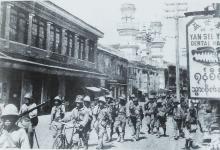This lunchtime talk addresses how World War II and the Japanese occupation affected the economies and peoples of Southeast Asia. Beginning in late 1941 Japan, as part of its plan to build an autarkic East Asian empire and to secure oil supplies essential for war in the Pacific, swiftly took control of Southeast Asia. Japanese occupation had a devastating economic impact on the region. Between 1941 and 1945, GDP fell sharply throughout Southeast Asia and in a number of countries by half. Declining output was caused by the loss of access to global markets and supplies from them, by Japan’s attempt to fashion command economies suitable for a Greater East Asia Co-Prosperity Sphere, and by country, or even regional, autarky instituted by the military. And there was wartime destruction. Japanese resource demands and policies dictated that Southeast Asia finance its own occupation. Nor did the region receive more than a few consumer goods from Japan. Famine and forced labour accounted for the bulk of the 4.4 million Southeast Asian civilians who died prematurely under Japanese occupation. Exploitative Japanese policies and extreme economic dislocation hastened — and to varying extents shaped — post-war Southeast Asian political and social change. Every country except Thailand had civil war or revolution. In some countries, political legacies became economic with the nationalist politicization of economies. Per capita incomes in just three of Southeast Asia’s six main pre-war countries had, by 1959, recovered to 1938 levels, while recovery in the other three occurred only during the 1970s. Even so, in the longer term pre-World War II patterns of globalization have again become the dominant economic force throughout Southeast Asia.

